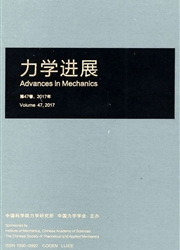

 中文摘要:
中文摘要:
总结和评述了近年来金属与合金变形局部化的形成、微结构演化与剪切断裂方面作者和相关的研究工作成果.材料包括低碳钢,SS304不锈钢,Fe-15%Ni—15%Cr单晶,Al-Li合金,α—Ti和Ti-6Al-4V,Al/SiCp复合材料等.综述内容主要包括:采用改进的Hopkinson扭杆装置,对剪切变形局部化形成、发展和演化过程进行了实验观察与数值模拟;采用“侧剖”与“对接”等定点方法制备电子显微镜薄膜试样,对剪切带内相变与再结晶、非晶转变、旋涡结构等动态变形现象,以及与宏观动态力学行为对应的位错胞的形成、发展和坍塌等微结构特征进行了观测;提出了应变和应变率同时作为剪切带形成的两个必要条件的直接实验证据;在剪切带内发现了α′-马氏体相变现象,以及相变产物与母体之间的晶体学关系;通过位错单滑移或交滑移等微观剪切最后发展成为宏观剪切的机制;对剪切带内再结晶结构的观测和对再结晶动力学本构关系的定量描述;对剪切带特别是“白色”腐蚀带(或相变带)的形成机制的分析和新的解释,指出“白色”是带内亚结构取向趋于一致,其在光学或扫描显微镜下很难辨认这些亚结构的取向差所致,并非表明剪切带内一定发生了相变;通过截断实验和实时跟踪观测发现,剪切带内微裂纹的萌生与聚合是材料承载能力骤然下降并导致最后断裂的主控因素.此外,本文对近年来在准静态和循环加载下材料的局部化形变与剪切断裂的实验结果予以简要评述,指出其微观机制与动态载荷下的截然不同,是由位错的平面滑移所控制的,与热效应无关的等温变形.
 英文摘要:
英文摘要:
Investigations on microstructural aspects of adiabatic shear localization under strain rate 10^3s^-1 to 10^4 s^-1 using EBSD-SEM, TEM and HREM are critically reviewed. The principal features are: the critical condition for the occurrence of shear-bands should involve both shear strain and strain rate; the deformed-band forms first and the white-etching band follows with further shear deformation; the presence of white-etching bands is generally indicated by different etching response of the narrow bands; shear band seems to initiate with a crystallographic slip in a favored grain and then propagates into the adjacent grains by co-operative slip or cross-slip, leading to the shear localization over the whole cross-section; both grain refinement and transition from crystalline to amorphous can occur in shear bands; the γ→ε→α′ transformation may also occur and the new transformed products have a certain orientation relationship with their parent matrix; the sharp drop in the load-carrying capability of the specimen seems to be closely associated with the appearance of a critical coalescence of microcracks or voids in the band; the equiaxed-and distorted-free grains are proposed to attribute to the rotational recrystallization. On the other hand, the micro-mechanism of shear localization and fracture subjected to quasi-static and fatigue loadings is different from the dynamic case, namely caused by the dislocation planner slip and not related to thermal effects. Additionally, some further research are suggested.
 同期刊论文项目
同期刊论文项目
 同项目期刊论文
同项目期刊论文
 期刊信息
期刊信息
